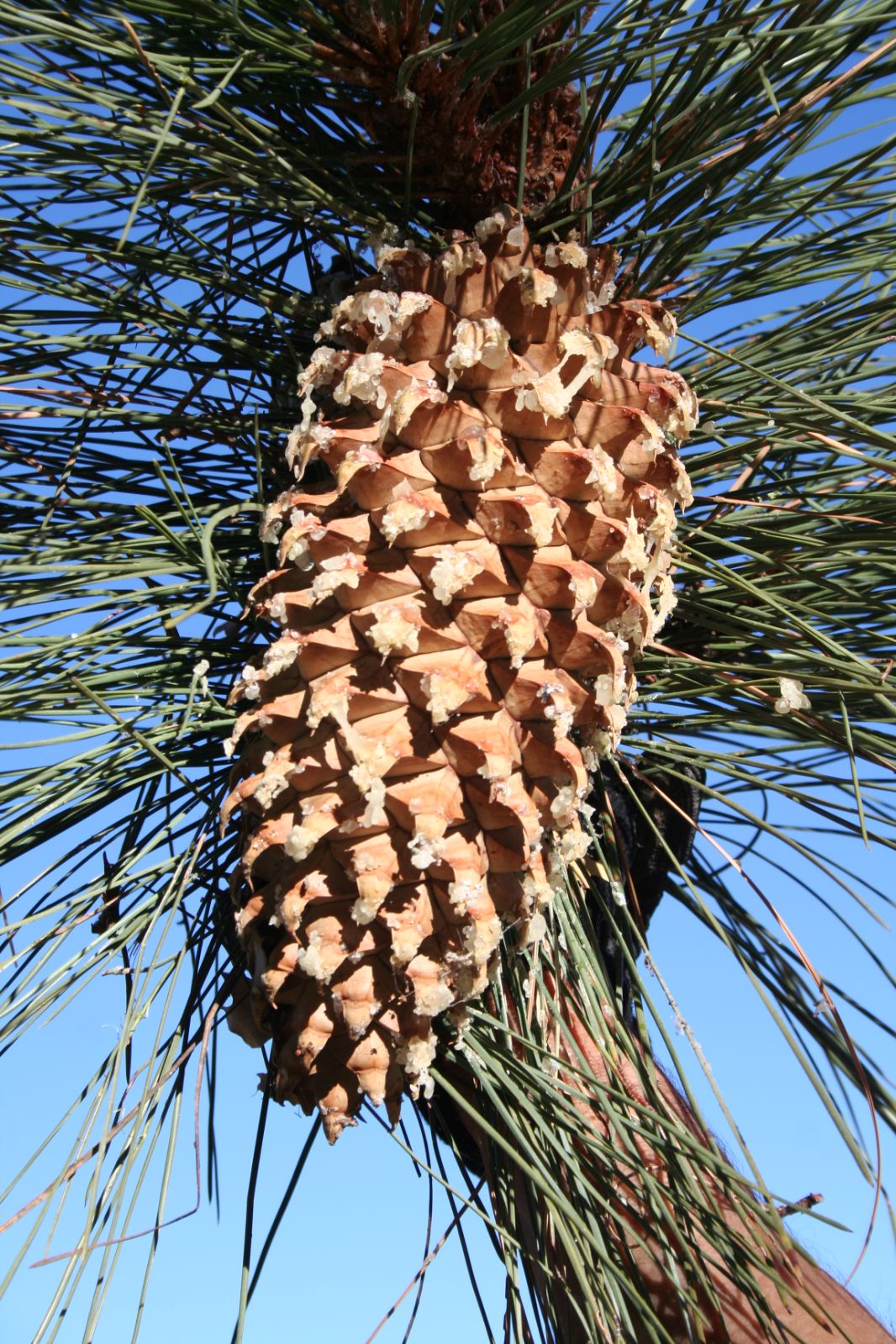Pinus coulteri
Credits
Article from Bean's Trees and Shrubs Hardy in the British Isles
Recommended citation
'Pinus coulteri' from the website Trees and Shrubs Online (treesandshrubsonline.
Genus
Common Names
- Bigcone Pine
Other taxa in genus
- Pinus albicaulis
- Pinus arizonica
- Pinus armandii
- Pinus attenuata
- Pinus ayacahuite
- Pinus balfouriana
- Pinus banksiana
- Pinus bhutanica
- Pinus brutia
- Pinus bungeana
- Pinus canariensis
- Pinus cembra
- Pinus cembroides
- Pinus chiapensis
- Pinus contorta
- Pinus culminicola
- Pinus densata
- Pinus densiflora
- Pinus devoniana
- Pinus durangensis
- Pinus echinata
- Pinus edulis
- Pinus elliottii
- Pinus engelmannii
- Pinus eremitana
- Pinus flexilis
- Pinus gerardiana
- Pinus greggii
- Pinus × hakkodensis
- Pinus halepensis
- Pinus hartwegii
- Pinus heldreichii
- Pinus henryi
- Pinus × holfordiana
- Pinus hwangshanensis
- Pinus jeffreyi
- Pinus johannis
- Pinus koraiensis
- Pinus lambertiana
- Pinus leiophylla
- Pinus longaeva
- Pinus massoniana
- Pinus maximartinezii
- Pinus monophylla
- Pinus montezumae
- Pinus monticola
- Pinus morrisonicola
- Pinus mugo
- Pinus muricata
- Pinus nelsonii
- Pinus nigra
- Pinus oocarpa
- Pinus orizabensis
- Pinus palustris
- Pinus parviflora
- Pinus patula
- Pinus peuce
- Pinus pinaster
- Pinus pinceana
- Pinus pinea
- Pinus ponderosa
- Pinus pseudostrobus
- Pinus pumila
- Pinus pungens
- Pinus quadrifolia
- Pinus radiata
- Pinus remota
- Pinus resinosa
- Pinus rigida
- Pinus roxburghii
- Pinus sabiniana
- Pinus serotina
- Pinus sibirica
- Pinus strobiformis
- Pinus strobus
- Pinus sylvestris
- Pinus tabuliformis
- Pinus taeda
- Pinus taiwanensis
- Pinus teocote
- Pinus thunbergii
- Pinus torreyana
- Pinus virginiana
- Pinus wallichiana
- Pinus wangii
- Pinus yunnanensis
A tree 50 to 80 ft high, with a stout, erect trunk, 3 to 4 ft in thickness, whose bark is divided into deep broad ridges. Young shoots very thick, often glaucous, not downy; the terminal part carrying a cluster of crowded leaves, the lower part furnished with fringed, slender-pointed scales, 1 in. long. The older portions of the branchlet are rough with the remains of these scales, and the prominences on which the leaf-bundles were seated. Buds conical, resinous, slender-pointed, 11⁄2 in. long, 3⁄4 in. wide. Leaves in threes, falling the fourth year; 10 to 14 in. long, minutely toothed, grey-green, with lines of stomata on all three faces; leaf-sheaths persistent, 1 in. long. Cones 10 to 12 in. long, 5 to 7 in. thick; the scales terminated by a stout triangular spine.
Native of California; discovered by Dr Coulter in 1832; introduced by Douglas the same year. The cones of this remarkable pine are the heaviest and most formidably armed among three-leaved pines, but are not often borne in this country. It resembles P. ponderosa in leaf and shoot, but is a shorter tree with more spreading branches. The cones are very different, and more like those of P. sabiniana which, however, has smoother, more slender shoots, and greyer leaves. Coulter’s pine is not common in cultivation, but is very striking in its somewhat gaunt branching, its terminal bunches of leaves, spreading like a sweep’s brush, and its immense cones.
The following are some of the specimens recorded in recent years: Wakehurst Place, Sussex (Valley), 58 × 5 ft (1968); National Pinetum, Bedgebury, Kent, in Forest Plots, pl. 1935, 45 × 41⁄4 ft (1967), in pine collection, pl. 1926, 47 × 33⁄4 ft (1969); Royal Horticultural Society Garden, in Pinetum, 45 × 33⁄4 ft (1969); Dropmore, Bucks, pl. 1915, 56 × 71⁄4 ft (1970); Titley Court, Heref. (from Douglas introduction?), 98 × 121⁄2 ft (1963); Edinburgh Botanic Garden, 59 × 43⁄4 ft (1970).
From the Supplement (Vol. V)
specimens: Wakehurst Place, Sussex, 66 × 63⁄4 ft (1979); Forest Research Station, Alice Holt, Hants, pl. 1952, 53 × 51⁄2 ft (1982); National Pinetum, Bedgebury, Kent, Forest Plots, pl. 1935, 60 × 51⁄2 ft and, Pine Collection, pl. 1926, 57 × 41⁄2 ft (1983); R.H.S. Garden, Wisley, Surrey, Pinetum, 42 × 41⁄2 ft (1983); Dropmore, Bucks., pl. 1915, this tree is dead; Westonbirt, Glos., pl. 1928, 66 × 61⁄4 ft (1984); Titley Court, Heref., this tree died 1970; Edinburgh Botanic Garden, 71 × 51⁄2 ft (1981); Powerscourt, Co. Wicklow, Eire, 82 × 71⁄2 ft (1980).


